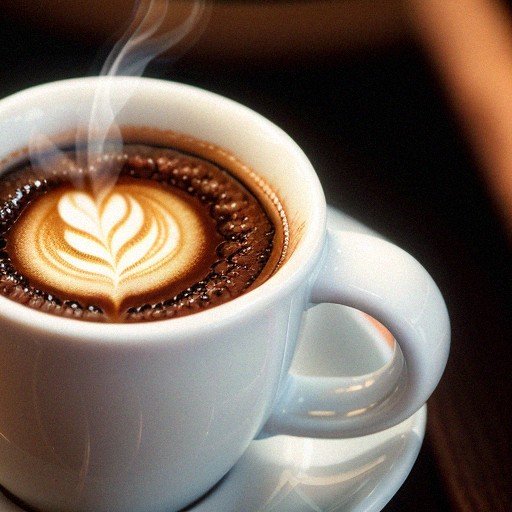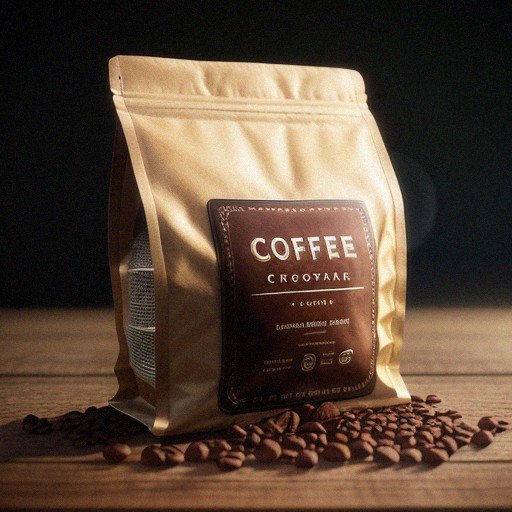12 OZ to Cup: Quick Conversion Guide for Busy Cooks

When it comes to converting units of measurement in the kitchen, it is important to have a reliable guide. The conversion of fluid ounces to cups is a common task that people encounter while cooking or baking. It can be crucial to get the conversion precise to ensure the success of a recipe. We are here to provide you with an understanding of the relationship between ounces (oz) and cups, as well as how to effortlessly convert 12 ounces to cups.

Fluid ounces (fl oz) are a measurement of volume often used in the United States, while cups are a widely accepted measurement of volume across the globe. Both units are primarily used for cooking and baking. Although fluid ounces and cups are related, their conversion rates may vary depending on the context in which they are used.
For a quick and accurate conversion of 12 fluid ounces to cups, one can use a simple formula or refer to a conversion chart. According to CalculateMe.com, 12 U.S. fluid ounces is equivalent to 1.5 U.S. cups. By having this information, we can confidently make the conversion and ensure our recipes come out perfect every time.
Understanding Volume Conversion

When it comes to converting between different units of volume, it’s essential for us to understand the context and the specific units being used. In this section, we will address the conversion of fluid ounces (fl oz) to cups, two common units of volume in the United States.
The first aspect we need to get familiar with is the differences between fluid ounces and ounces. While ounces are generally used for expressing weight, fluid ounces are specifically utilized to measure the volume of liquids. A fluid ounce can come in two variations: the US fluid ounce and the Imperial fluid ounce. In our case, we will focus on the US fluid ounce.
A cup is another unit of volume typically used in cooking and baking. It is important to note that it is specific to the United States and is not the same as the Imperial cup used in the United Kingdom.
To convert fluid ounces to cups, we need a conversion factor. In the United States, 1 fluid ounce is equal to 1/8 of a cup. Therefore, the conversion factor is 0.125. To convert fluid ounces to cups, we simply multiply the number of fluid ounces by this conversion factor.
Let’s apply this conversion to a specific example: 12 fluid ounces to cups. We multiply 12 fluid ounces by 0.125 to get the result:
12 fl oz × 0.125 = 1.5 cups
As a summary, here are the main points to remember when converting fluid ounces to cups:
- Fluid ounces are for measuring the volume of liquids.
- Always verify if you are working with US fluid ounces or Imperial fluid ounces.
- 1 US fluid ounce is equal to 0.125 cups.
- To convert between these units, multiply the fluid ounces by 0.125.
By applying this knowledge, we can effortlessly convert between fluid ounces and cups in various situations, especially in kitchen endeavors.
12 Oz to Cup Conversion

When it comes to converting 12 ounces (oz) to cups, it’s important to remember that fluid ounces and cups are not interchangeable units, as they measure volume differently. To accurately convert between these units, we need to consider the ingredient being measured. Nevertheless, we can provide a general conversion for water.
For water, 12 ounces is approximately 1.5 cups. If you need more specific conversions for other ingredients, we suggest referring to a conversion table tailored to the specific ingredient you are working with.
Now, let’s break down the conversion process. We know that:
1 U.S. Fluid Ounce = 0.125 U.S. Cups
To convert 12 ounces to cups, we simply need to multiply the number of ounces by the conversion factor, like so:
12 oz * 0.125 cups/oz = 1.5 cups
This conversion works for water, but the result may vary for other ingredients due to their density or composition. For regular kitchen use, ounce to cups conversion tables can be quite helpful in making these calculations.
If you prefer an automated approach, you can use an oz to cups converter. These tools, available online, allow you to enter the number of ounces you wish to convert, and they will provide the equivalent measurement in cups.
In summary, converting 12 ounces to cups typically results in 1.5 cups for water, but may vary based on the specific ingredient being measured. We recommend using a reliable conversion table or an online converter to ensure accurate results.
Understanding Units and Symbols

When working with measurements, it’s important to understand the various units and symbols that are commonly used. In this section, we will be discussing U.S. cups, fluid ounces, and the related abbreviations used for these units. We will also briefly touch on the SI units and how they compare to English units.
In the United States, we commonly use the U.S. cup as a unit of volume for measuring liquids or granular substances, such as flour or sugar. One U.S. cup is equivalent to 1/16th of a U.S. gallon or around 236 milliliters. Cups are denoted by the abbreviation “c” or “cup“. When using multiple cups it is common to see the abbreviation as “cups“.
On the other hand, fluid ounces, denoted by symbols fl oz or oz fl, are used as a unit of volume for measuring liquids. It is important to note that fluid ounces are not interchangeable with ounces (used for weight). One fluid ounce is equal to 1/128th of a U.S. gallon or approximately 29.573 milliliters.
Here’s a handy list of the abbreviations and their respective unit symbols:
- U.S. Cup: c, cup, cups
- U.S. Fluid Ounce: fl oz, oz fl
In the international science community and many other countries, the SI (International System of Units) is used. SI units are a modern metric system that is standardized and based on decimals. For volume, the SI unit is the cubic meter (m³), though in everyday use, liters (L) are more commonly used. To give a better understanding, 1 liter is equal to 0.264172 U.S. gallons, and 1 U.S. cup is approximately equal to 0.236588 liters.
While English units like cups and ounces are predominantly used in the United States, other parts of the world use the metric system, which involves units like liters and grams. In some situations, it becomes essential to convert between English units and SI units, for instance, when following a recipe from a different country.
In summary, understanding and using the correct units, abbreviations, and symbols are crucial when working with measurements, especially in tasks like cooking or scientific analysis. Being familiar with both English units and SI units will make your life easier when dealing with measurements across different systems.
Conversion for Cooking and Baking

When it comes to cooking and baking, accurate measurements are essential for ensuring the perfect outcome. Converting ounces to cups is a common task in most kitchens because different ingredients require varying forms of measurement. In this section, we will discuss some of the most common ingredients and their conversion factors between ounces and cups.
To start, we need to clarify the distinction between fluid ounces and weight ounces. A fluid ounce (fl oz) is a measure of volume, while a weight ounce (oz) is a measure of mass. For liquid ingredients like water and milk, we use fluid ounces. For dry ingredients such as flour and sugar, we typically measure by weight ounces. Converting fluid ounces to cups is relatively simple: 8 fluid ounces equal 1 cup. So, for 12 fluid ounces, the conversion would be 1.5 cups.
Here’s a quick reference for some common ingredients:
- Water, Milk, Vegetable Oil: For liquids like water, milk, and vegetable oil, 12 fluid ounces equal 1.5 cups. This is because liquids are typically measured in volume, which means that fluid ounces can be easily converted to cups.
- Flour, Sugar: Converting weight ounces to cups for dry ingredients like flour and sugar can be a bit more challenging due to the varying densities. It’s best to refer to a conversion chart for accurate dry ingredient measurements. For example, 1 cup of all-purpose flour typically weighs 4.5 ounces. So, to convert 12 ounces of flour to cups, we would divide 12 by 4.5, which equals 2.67 cups.
- Butter: With butter, the conversion is simpler because most packages provide markings for tablespoons, which can be easily converted to cups. One stick of butter (4 ounces) equals 8 tablespoons, and since there are 16 tablespoons in 1 cup, 12 ounces of butter would convert to 1.5 cups.
When measuring ingredients, it’s crucial to use the appropriate measuring tools for accuracy. For liquids, we recommend using a liquid measuring cup, whereas for dry ingredients, it’s best to use a kitchen scale or a dry measuring cup. By being mindful of these conversions and using the proper tools, we can ensure our recipes turn out perfectly every time.
Online Conversion Calculators

We live in a world where online resources make our lives much easier, and this includes using online conversion calculators for units of measurement. When it comes to converting 12 ounces (oz) to its equivalent in cups, there are plenty of online conversion calculators available to provide a quick and accurate result.
One way of converting 12 oz to cups is by using an online unit converter specifically designed for this purpose. These user-friendly tools make it as simple as entering the value (12 oz, in our case) and hitting the ‘convert’ button. Within seconds, you’ll have your desired result – in this case, 1 and a 1⁄2 cups.
Some websites even provide a quick conversion chart[^1^], which can come in handy when you don’t have access to an internet connection or need a quick reference. A useful chart might show common values such as 1 ounce to cup, 5 ounces to cups, and 10 ounces to cups, making it simple to understand the relationship between these two units of measurement.
In summary, online conversion calculators offer a convenient and accurate way to convert 12 ounces to cups within seconds. With the help of unit converters and quick conversion charts, anyone can quickly find the value they need without having to worry about manual calculations.
Issues with Conversion

When converting between ounces (OZ) and cups, it’s essential to understand that these two units are not directly interchangeable. Ounces are typically a measure of mass (or weight) while cups represent volume. This means that the conversion factor is not the same for all substances, as the density will affect the number of ounces found in a cup.
While converting liquid ounces to cups, we must consider the standard conversion factor of one fluid ounce (FL OZ) equal to 0.125 cups or 1/8 cups. However, this factor only applies to fluids with a similar density to water. When working with different substances, such as honey or sugar, knowing the specific density is crucial to ensure accurate conversions.
Another factor to consider in these conversions is the potential for rounding errors. Rounding errors may cause slight inaccuracies in your measurements. For instance, converting 12 fluid ounces to cups results in 1.5 cups. But, when dealing with a unit conversion that yields an irrational number, rounding the result to the desired decimal places might lead to minor discrepancies in the quantity.
Moreover, we must keep in mind the difference between the US customary and metric measurement systems. As these systems have their unique conversion factors, mistakes may arise if we do not use the appropriate values. Be cautious when using resources that cater to specific measurement systems, and double-check to ensure that the units are consistent with your requirements.
In summary, issues may arise while converting ounces to cups, such as differences in mass and volume measurements, potential rounding errors, variations in density, and distinctions between different measurement systems. It’s essential to consider these factors when making conversions to ensure accuracy and reliability in our measurements.
Metric and US Measurements

When it comes to converting 12 ounces to cups, understanding the difference between metric and U.S. measurements is essential. In this section, we will discuss metric conversion, U.S. measurements, and how to use metric conversion tables to convert various units, such as cubic meters and U.S. gallons, including the legal cup.
There are two main systems for measuring volume: the metric system and the U.S. system. The metric system, also known as the International System of Units, utilizes units such as cubic meters, liters, and milliliters. On the other hand, the U.S. system uses U.S. gallons, U.S. fluid ounces, and U.S. cups. To accurately convert between these systems, we need to know the conversion factors.
For instance, 1 U.S. fluid ounce equals roughly 29.5735 milliliters, while 1 cubic meter equals 264.172 U.S. gallons, and 1 U.S. gallon is equivalent to approximately 3.78541 liters. These conversions are crucial for converting 12 ounces to cups.
Here is a table to help you understand the conversion factors:
| U.S. Unit | Metric Unit | Conversion Factor |
|---|---|---|
| U.S. Fluid Ounce | Milliliter | 29.5735 |
| U.S. Gallon | Liter | 3.78541 |
| U.S. Gallon | Cubic Meter | 0.00378541 |
When converting 12 ounces to cups, we first need to know the conversion factor between ounces and cups. As mentioned earlier, 1 U.S. cup is equal to 8 U.S. fluid ounces. Therefore, to convert 12 ounces to cups, we simply divide the number of ounces by the conversion factor:
12 ounces ÷ 8 = 1.5 cups
For those familiar with the metric system, it’s helpful to also know that a U.S. legal cup is defined as 240 milliliters. Thus, when converting 12 ounces to metric units, we can use the conversion factors from the table above:
12 ounces * 29.5735 milliliters/ounce ≈ 354.88 milliliters
Then, dividing this value by the metric legal cup conversion:
354.88 milliliters ÷ 240 milliliters/cup ≈ 1.47867 metric cups
In summary, 12 ounces is equal to 1.5 U.S. cups or approximately 1.47867 metric cups. This knowledge will be helpful when using international recipes or converting volumes for various ingredients. Remember to always use the appropriate measurement units and conversion factors for the most accurate results.
Miscellaneous Concepts

In this section, we will briefly discuss various conversion concepts that are related to, but not directly focused on, the conversion of 12 fluid ounces (oz) to cups. We will touch upon currency, length, area, pressure, and multiplication, providing some context and clarity for those who may be new to these topics.
Currency and unit conversions frequently go hand in hand. For example, when traveling or purchasing items from other countries, it is often necessary to convert between currencies. Similarly, converting from ounces to cups may be useful when following recipes that use different measurement systems. It is essential to be familiar with conversion factors or use online tools like CalculateMe.com to quickly perform these conversions.
Length and area are both measures related to space, and like the fluid ounce and cup, conversions between these units are commonly needed in various contexts. Length refers to the distance between two points, while area measures the extent of a surface. When working with units like inches, feet, and yards or square meters, square feet, and square inches, we need to be familiar with their relationships and conversion factors.
Pressure, on the other hand, is the force applied per unit area, commonly measured in units like pounds per square inch (PSI), pascals (Pa), or bars. Converting between these units typically involves multiplying by a specific factor. For example, to convert PSI to Pa, we would multiply the value in PSI by 6,894.76.
Multiplication plays a vital role in the conversion of units, including the conversion of 12 oz to cups. To convert fluid ounces to cups, we must multiply by the conversion factor (0.125). For instance, in our case, the conversion would be 12 oz * 0.125 = 1.5 cups. Don’t forget about utilizing online tools like Ask Numbers that can save you time and effort.
In summary, we touched upon various concepts such as currency, length, area, pressure, and multiplication that relate to the primary topic of converting 12 fluid ounces to cups. As we have demonstrated, understanding these concepts is crucial in various situations, and the effective use of online tools can aid in quick and accurate conversions.



One Comment